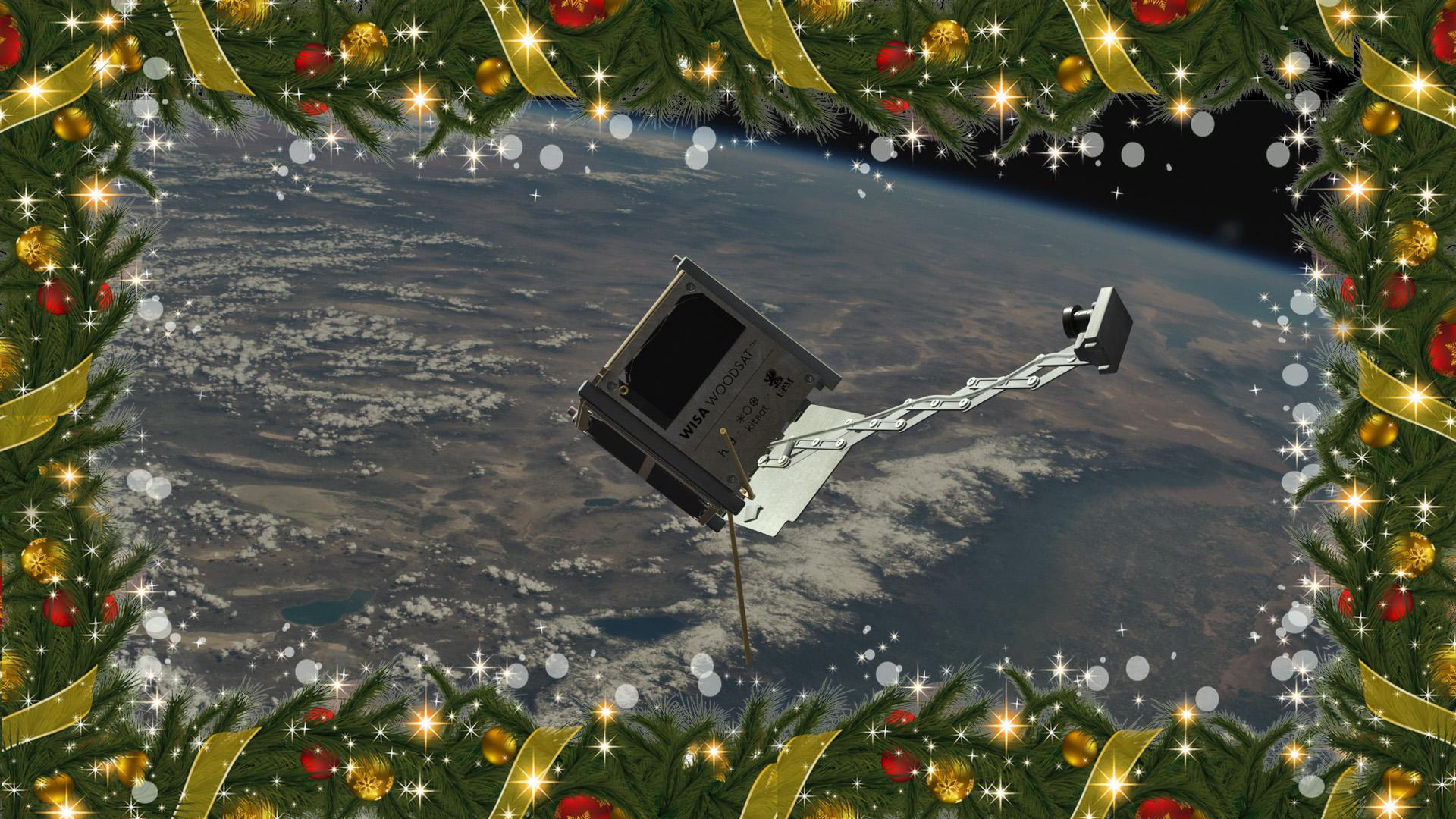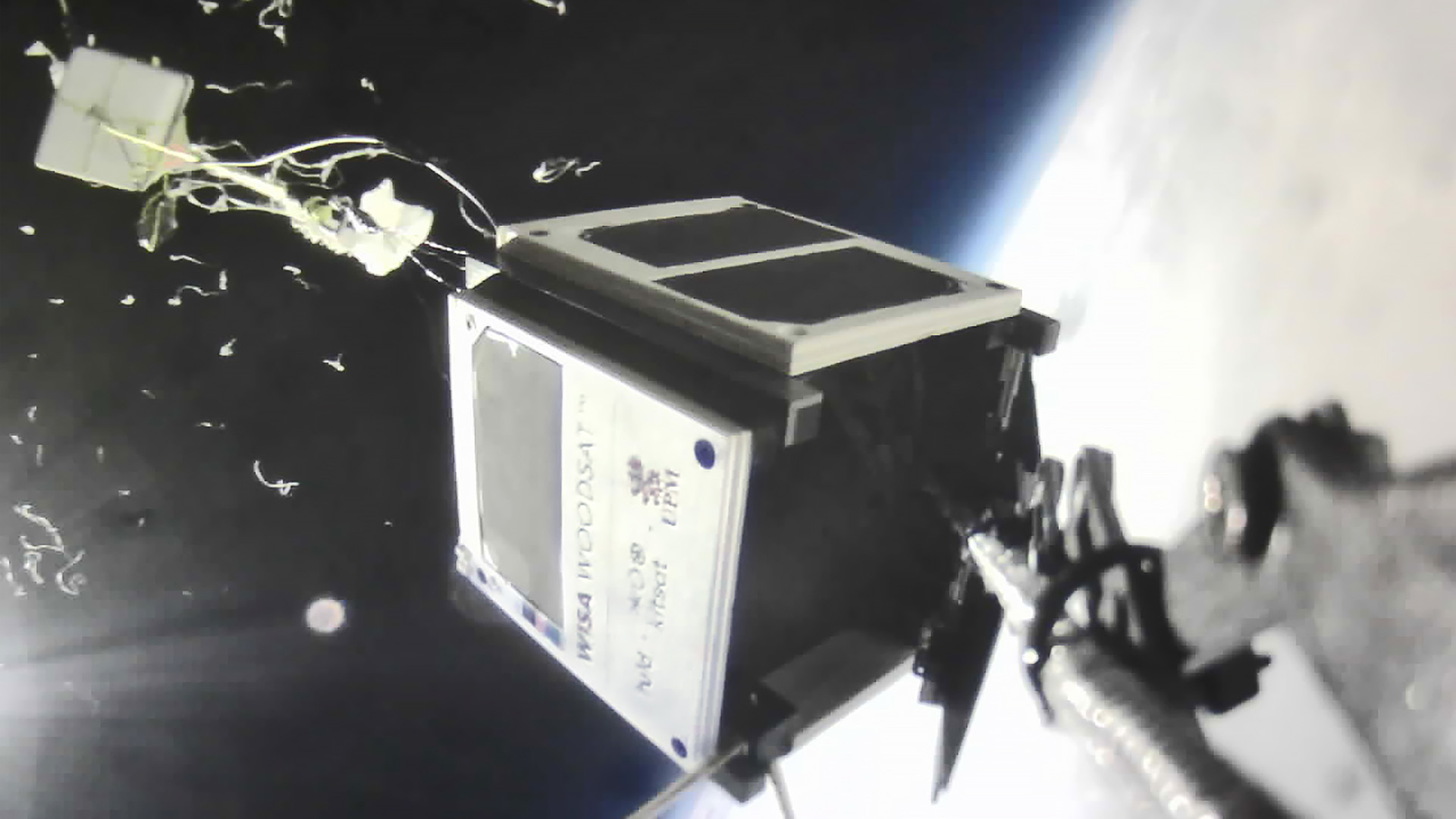

In principle launching a satellite is easy. Just build one, do all the necessary paperwork and book a launch.
In practice, the process is slightly more complicated, especially if you want to do something as ambitious as we are. We'll do many firsts in space business: not only WISA Woodsat will use plywood as a main construction material of the satellite structure, but also the lower part of the body and a deployable camera boom will be 3D printed metal, we'll have unprecedented miniaturised science suite for studying the plywood behavior and we also carry along with the first Europan demo of a temperature adaptive memory membrane (4D printed plastic).
Originally we just planned to upgrade the Kitsat satellite stack and adapt it to the mission and slightly another radio band, but now our "bus", the electronics running the satellite, will be a state-of-art nanosatellite – ready for many follow-on missions after this one.
One important part of the process has been learning to handle and work with plywood. How should it be treated, machined, and coated? How does it behave in space conditions? The team at the European Space Agency has been rigorously analysing the samples and measuring the outgassing.
Now we don't only know that plywood is certainly a very good material for space use, but also have established procedures for how it has to be machined.
Finally now in December most of the parts of the satellite flying to space and its identical spare unit are ready. Some of the electronics have been redesigned in November and December, and those parts remain to be manufactured. This is related to the change of the radio bandwidth as we couldn't finally use the radio amateur frequency because the International Radio Amateur Union considered after a long process that our mission doesn't meet the new strengthened requirements for a radio amateur frequency allocation.
The positive side of this disappointment has been the fact, that commercial radio frequency makes our satellite bus better for use in different kinds of missions in the future.
At the same time, Rocket Lab's launch that we intended to fly with has been pushed to February. So, also if our satellite would have been fully fit for a flight already in September, we couldn't have launched this year. These delays are still very normal in the space business, and in fact, being so well in the schedule as we and Rocket Lab are, is quite rare.
Right we're looking at a launch opportunity in spring for WISA Woodsat with another Rocket Lab's Electron vehicle; the new radio allocation takes time, and also concerning that, our space operations license is still being reviewed by the Finnish authorities.
We're also shifting our focus from designing the satellite to the future and our concrete mission in space with the planning of the actions right after the launch, early orbit operations, and during the actual science mission. The most hectic period will last two months, and after that – depending on the status of the satellite – the operations will be more automatic.
So, quite a lot has been and is happening, but right now we'll have a short break for the holiday season. It's time to relax for a while,
Therefore this time is more than an appropriate moment to thank all people involved with our mission this hectic year.
The core team has been our people Samuli Nyman (main engineer), Bruce Clayhills and Tessa Nikander, and Kevin Vainio and Jaakko Kaartinen from Huld, supported constantly by Orcun Ergincan, Bruno Bras, Mathis Munck at the European Space Agency, Sami Uuksulainen at UPM Plywood, Marko Pudas at Picosun, Maido Merisalu from the University of Tartu and Markku Lindqvist at Delva.
Lisa Stojanovski, Johsua Hein, and Brian Hirsch from Rocket Lab have assisted us towards to launch.
Other persons involved are Panu Nurmilo from Nurmilo; Kimmo Kaario, Matti Anttila and Oova Virtanen from Huld, Juha Kilpinen, Joonas-Petteri Santala, Mika Peltola and Jukka Lähde from Tikkurila; Hannu Laine and Janne Oinas from Raflatac; Emmanuel Amorim, Fabrice Cipriani, Bruno Delacourt, Gregoire Deprez, Hugh Evans, Mircea Helici, Jussi Hokka, Ugo Lafont, Ricardo Martins, Adam Mitchell, Szilvia Szmolka, Adrian Tighe and especially Mikko Nikulainen and Riccardo Rampini from ESA; Nan Ekblom from Delva; Tuomas Terasvuori from Eurofins; Minna Lindroos, Kati Oinonen, Tommi Takanen, Marko Erola from UPM; Silver Roomussaar and Reet Treial from UPM-Kymmene Otepää; Caspar Ask Christiansen from Sens4; Raffaele Battaglia from OpenQCM; and Kimi Nivalinna from Laser Quality Markings.
Thank you all! And thanks also to Petra Wullings, Leo Nyman, Pekka Kouhia, just like Heidi Pennanen, Maija Lönnqvist from the Ministry of Economic Affairs and Employment, and many more who have been somehow involved with the mission.
Finally a special thank you to UPM Plywood's "space director" Ari Voutilainen, who has been backing our mission all the time with extraordinary enthusiasm.
See you in 2022!

The highlight of the year was a stratospheric flight with a satellite model in June. This photo shows the satellite and exploding balloon at an altitude of about 31 km.
